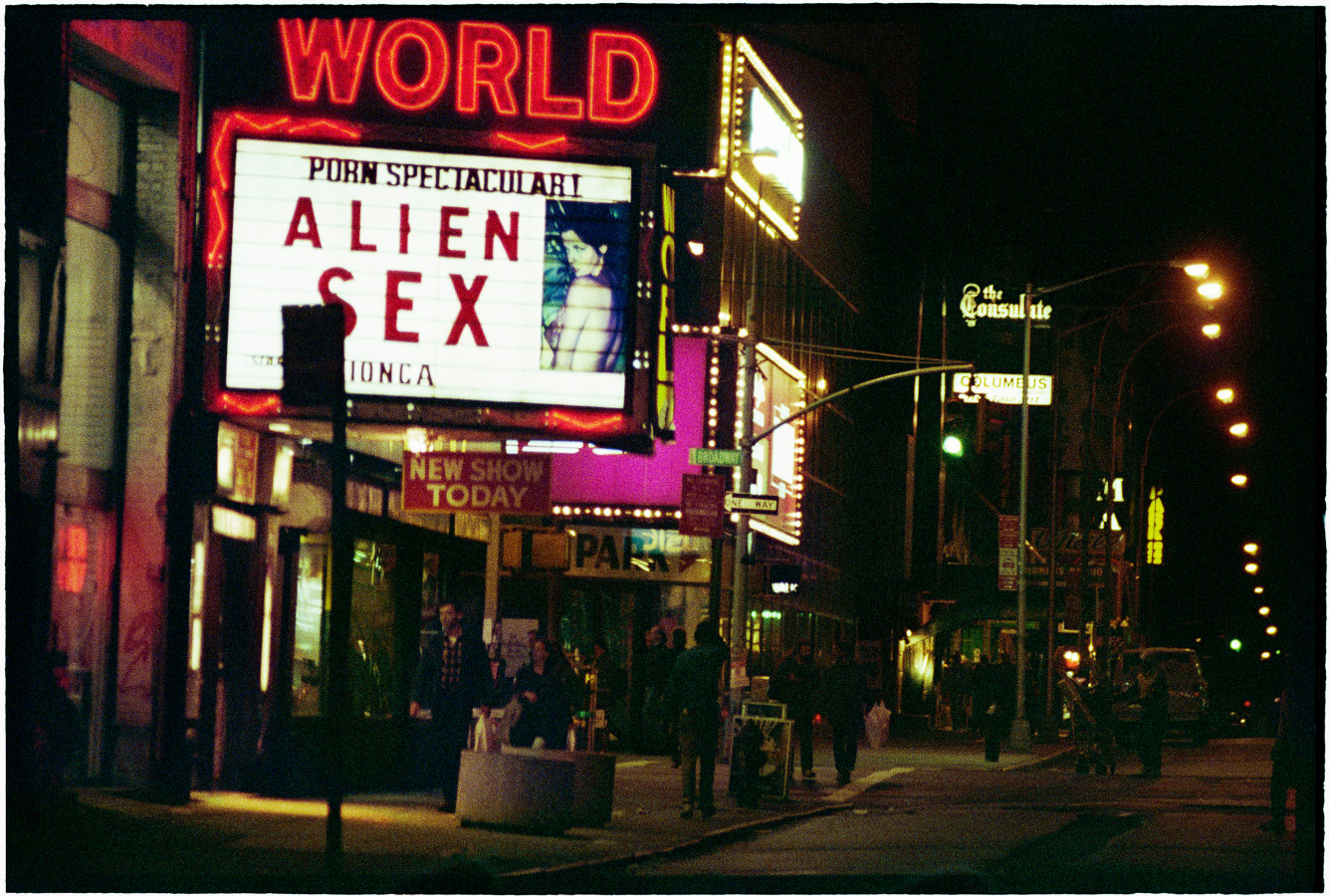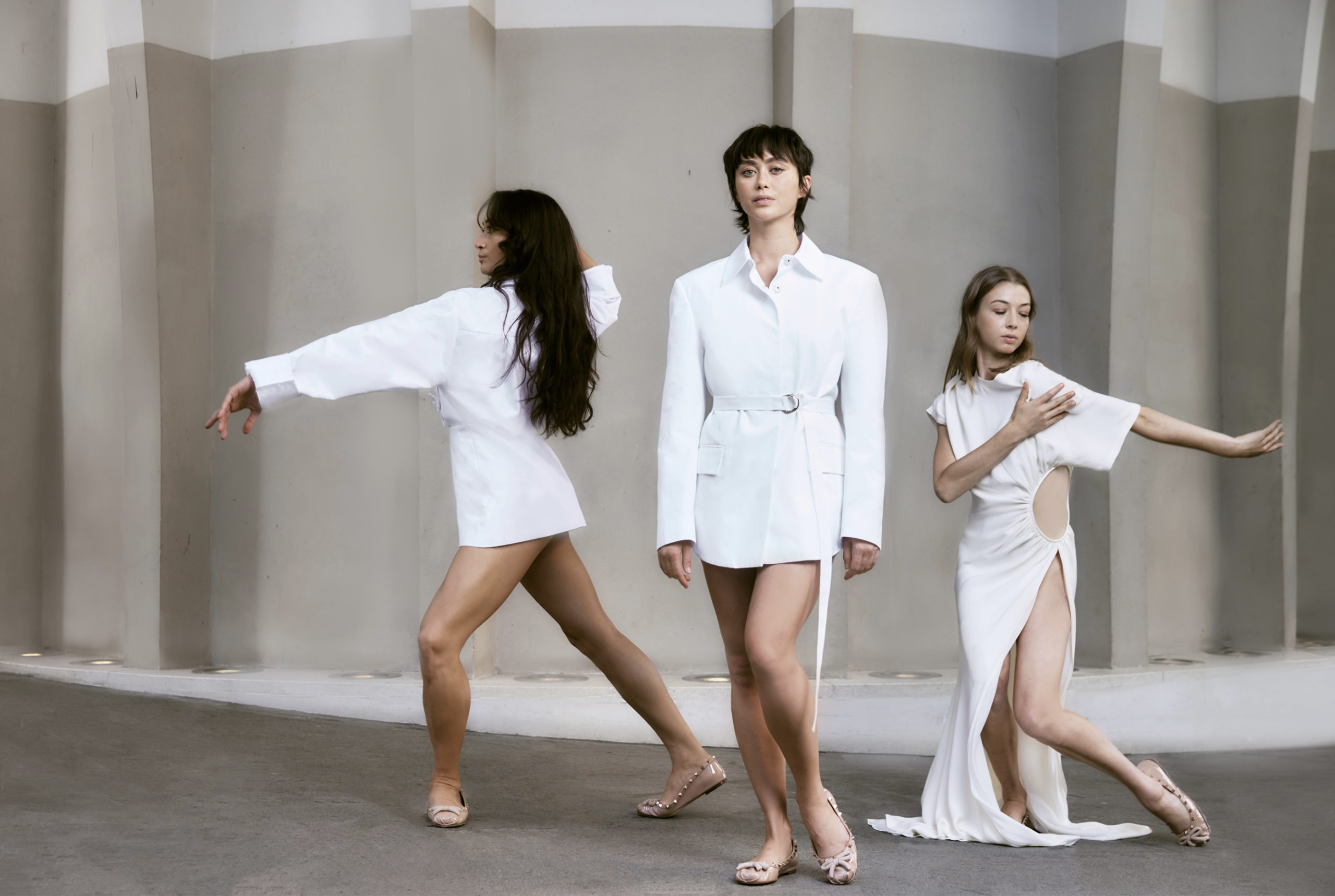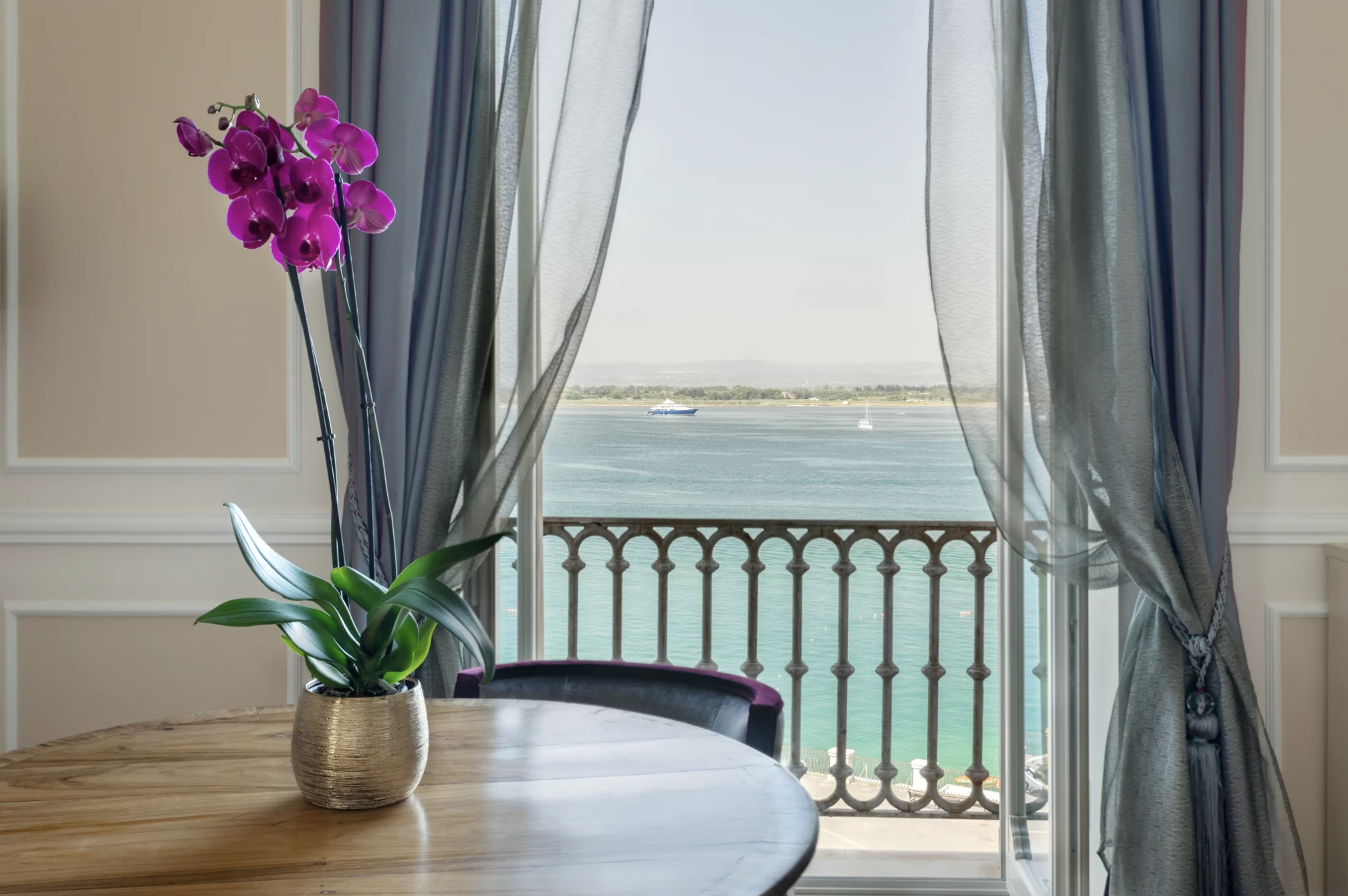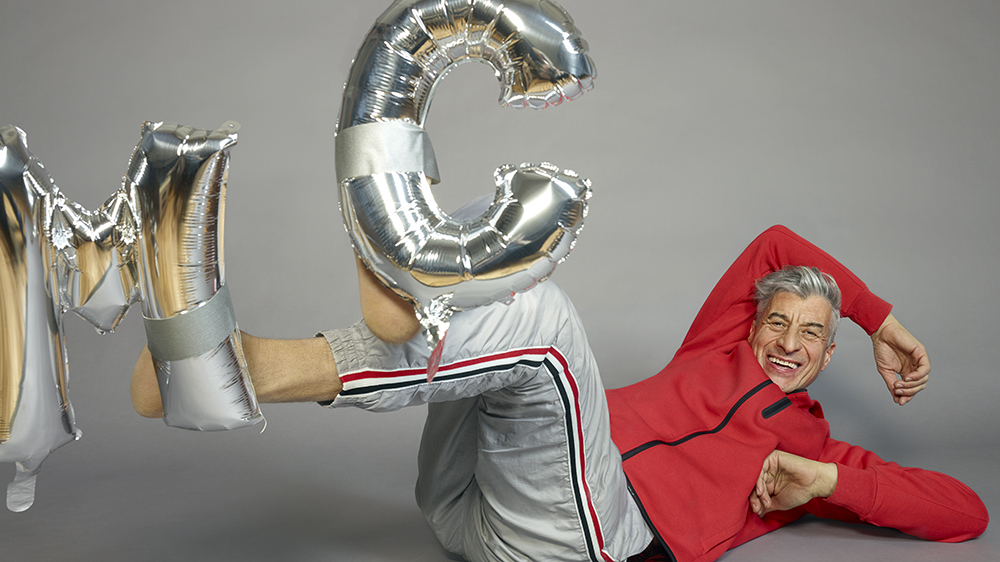
Robb Interview: Maurizio Cattelan
Bananas, duct tape and loads of confidence turned Cattelan into the art world’s merry prankster.
Related articles
For all the fuss made over the exponential growth of the contemporary art world—fairs and biennials popping up around the globe, finance experts labelling art an “asset class,” hours-long lines for Yayoi Kusama’s psychedelic “Infinity Mirror Rooms” and other experiential, Instagram-worthy phenomena—a paltry few 21st-century artists have succeeded in permeating mainstream culture.
Sure, the pseudonymous Banksy made headlines when he rigged a picture frame to shred one of his paintings after the hammer fell at Sotheby’s, though the media coverage focused on the destruction of an expensive object—and its potential rise in value as a result.
You’ll recall in December, Maurizio Cattelan not only joined the ranks of household names when his latest piece appeared at Art Basel Miami Beach but got there by dint of the artwork itself. Outrageous, provocative, hilarious and anger-inducing, it forced its way under people’s skin. The piece consisted of nothing more than a yellow banana stuck to the wall with a strip of silver duct tape. That was it. Slyly titling the work Comedian, Cattelan let everyone in on the joke, sparking a sensation on social media, breathless coverage in the national press and enough hand-wringing among art critics to fuel PhD dissertations for decades to come. Was it a brilliant send-up of art as commodity and its sheep-like sycophants? Or an empty, even cynical gag?
Days later, a self-described performance artist peeled and ate the banana with a flourish in front of stunned onlookers, dubbing the ingestion Hungry Artist—and then held a press conference, milking every second of his viral infamy. (One of Cattelan’s gallerists, Emmanuel Perrotin, chose an art-historical analogy to liken it to – the numerous men who relieved themselves in Duchamp’s urinal, Fountain.) Eventually, the crowds queuing to snap selfies with the fruit-stand staple (the gallery had replacements on hand) necessitated the removal of the piece. Of course, Cattelan—and Perrotin—had the last laugh, selling the edition of three for six figures. The high-potassium wall hanging easily became the most talked-about artwork of the year.

Maurizio Cattelan photographed in New York Photo by Chris Buck
Cattelan, 59, is no stranger to controversy—or to a brand of mischievous humour both within his art practice and intrinsic to his enigmatic persona. His oeuvre teeters uneasily between reality and fiction, including a lifelike sculpture of a prone Pope John Paul II, felled by a meteorite; a horse with its head plunged through a wall; and, darkest of all, a kneeling schoolboy-size figure of Hitler apparently praying, titled Him.
He once duct-taped an art dealer to a wall, suspending him a couple feet off the ground. Another time, at a loss for what to make, he locked the gallery door and hung a sign saying, “Be Right Back.”
When the Guggenheim Museum offered him a retrospective in 2011, he insisted on dangling virtually all of his entire life’s work from the ceiling of the soaring rotunda, a feat of engineering worthy of Richard Serra, to be sure, but a conceptual approach so unorthodox it induced apoplectic rages in some critics. The New Yorker’s esteemed Peter Schjeldahl ripped not only the exhibition design but also the contents: “[H]e doesn’t make art. He makes tendentious tchotchkes.”
For years early in his career, Cattelan dispatched his friend Massimiliano Gioni, now the respected artistic director of the New Museum, to stand in for him during interviews and lectures. Even in the 2016 documentary Maurizio Cattelan: Be Right Back, Gioni masqueraded as Cattelan, who was occasionally glimpsed but not heard. (The art-world cognoscenti no doubt chuckled smugly at the inside joke.)
RR: How do I know it’s Maurizio responding?
MC: You don’t. But I promise I’ll try my best to let you believe this is me writing.
RR: Why did you want to do this interview by e-mail?
MC: Because I prefer to think twice before saying things I could regret.
RR: Where are you?
MC: Where I spend most of the time: at my desk, in front of my computer, standing. I found out the ideas flow better if you stay up on your feet.
RR: When and how did you come up with the concept for Comedian?
MC: There’s no big story behind it: I was playing with bananas for months, trying to figure out the best way to use it, either for a [photo] shooting or a work. I tried it in metal and plastic, but it never convinced me enough to be shown. I still have some not-satisfying tests on my apartment walls. Then I came out with the decision to simply present it as it is, instead of re-presenting it. And it worked well, much more than I would ever expect!
RR: The venue of Art Basel Miami Beach seemed essential. It’s the glitzy fair, with as many fashion people, celebrities and partiers as art collectors. Would you have made the work for any other venue? Why or why not?
MC: I often worked site-specifically, and this was one of those cases, as you correctly guessed. But I’ve always believed that, paradoxically, the most important aspect of a site-specific, well-conceived work is that it should also be effective outside the context for which it was created originally. I’m still wondering if going viral so extensively can be considered to be “outside a specific context.”

Maurizio Cattelan photographed in New York Photo by Chris Buck
Conceptual artists from Sol LeWitt to Tino Sehgal have sold not objects but ideas, granting the collector or museum the right to re-create the artwork by following a set of precise instructions, which can be complex and highly specific or, as in the case of Comedian, almost comically simple. Many an arrogant fool has looked at a Jackson Pollock drip painting or an Ellsworth Kelly monochrome panel and thought, I could do that. But even the least artistically inclined or, frankly, dim-witted among us could follow Comedian’s official directions, which Cattelan relays: “Buy a yellow banana, stick it to the wall with grey duct tape.”

Visitors to Art Basel Miami Beach in December taking a photo with “Comedian,” 2019. Sarah Cascone
Cattelan says he didn’t even go to Miami to see the fair firsthand. “Like everyone else,” he tells me, “I saw it from the internet, and I guess my reaction was very standard: amazed and a little bit confused.” Though there’s nothing to stop anyone from picking up a 20-cent banana and a roll of tape and DIYing it—and one could reasonably argue it would be in the practical-joking spirit of the artist to do so—at least three collectors coughed up $173,000 to $216,000 a pop for authentication papers.
RR: Did you intend Comedian as a comment on the collectors who would buy it?
MC: I was trying to understand something about me and the world I live in. That’s where all my works were born. I’m not able to think so much in advance, commenting on something or someone I don’t even know if it will ever exist, such as collectors buying it.
RR: John Baldessari said he sometimes awakened in a sweat worrying that he was just making “trinkets” for rich people. You, on the other hand, seem to have a comfort level with the commercial side of the art world, as when you helped install La Nona Ora [the pope piece] at Christie’s or accepted a commission from Peter Brant. How do you feel about collectors speculating on your artwork?
MC: Probably John put it in the best way already: Sometimes dreams become nightmares and vice versa.

Cattelan’s papal installation “La Nona Ora,” 1999. Courtesy of the Artist, Marian Goodman Gallery and Galerie Emmanuel Perrotin
Born in Padua, Italy, Cattelan grew up poor. He is self-taught and says art school “probably would have curbed my enthusiasm about being an artist.” As an almost purely conceptual artist, he conjures the idea for a piece but typically relies on fabricators to execute it (Comedian being an exception). He broke through by needling the art world much the way he did in Miami Beach, with a carefully conceived project that is easy to dismiss as a prank: He replaced the covers on scores of the influential Italian Flash Art magazine—coveted real estate for artists—with an image of his own “work,” a playing-card-style pyramid constructed of old Flash Art magazines. In another scheme, he solicited 100 donations of $100 each and offered to pay an artist not to make work for a year. When no artist took him up on the deal, he used the money to move to New York.
“I guess humour is relevant in every moment of life,” says Cattelan. “It is what saves you from taking yourself too seriously and keeps in mind where you came from.”
He may be a jester, but Cattelan is no fool. His goal in New York was to join Marian Goodman Gallery, one of the world’s preeminent galleries, known in particular for its daunting roster of intellectual Europeans, including Gerhard Richter, Thomas Struth and Giuseppe Penone. The first piece he showed there, in a 1997 summertime group exhibit, consisted of two tiny, taxidermied mice sitting in a lounge chair under a sun umbrella. He has been with the gallery ever since. “I don’t think of him as a prankster or a genius, but somewhere in between,” Goodman says. “He is a talented fellow.”
Posed the same choice—joker or genius—Amy Cappellazzo, chairman of fine art at Sotheby’s, firmly replies, “Genius. But both. Genius, though.” She calls Comedian “profound and simple and hysterical” and, comparing Cattelan to gnomes of German fairy tales and Italian buffoni, or buffoons, adds, “He’s a funny clown. But actually, he’s a genius.”
Cattelan quickly gained a reputation for provocation. Between the art-world-sanctioned antics and the flare for catching the spotlight, he captured a degree of fame that eluded nearly all his peers. Lacking the oddball otherness of Salvador Dalí or Andy Warhol, he became more the merry prankster. And as with any class clown, audience reaction—be it laughter or scolding—seemed essential to the performance.

“Comedian,” 2019 Shutterstock
RR: What do you think about the reaction Comedian received?
MC: It was totally unexpected in its proportions and enthusiasm. It was also broadcasted on Good Morning America. I was shocked. My mother would have been proud, in the end.
RR: You once told me that the way a piece of yours is communicated to the public is an essential part of your creative process and the work’s existence. Did you conceive Comedian with the expectation it would go viral? Would you have considered the piece a failure if it hadn’t received the attention it did?
MC: I’m not good at this game, like let’s play that I was a princess and you were my horse. I always risk getting confused between fantasies and reality and start to believe I’m a princess or her horse.
RR: Were you surprised that someone ate Comedian, or were you waiting for someone to have the gall to do it? Did you see it as an act of admiration, appropriation, disrespect or something else?
MC: No, I wasn’t surprised. Comedian was gaining so much attention that it should have ended in a clamorous way. It has always happened in (art) history, and it still happens today: What shocks the audience is very often subject [to] acts of iconoclasm.
RR: Other works of yours have provoked “audience participation,” including the time two Polish lawmakers rolled the meteorite off the “Pope” and when a Milanese man climbed a tree (and fell) in an effort to cut down your sculptures of children hanging from a limb. Are you trying to push viewers to that level of discomfort or outrage?
MC: I believe art should change your life. You should not remain the same in front of it. Of course, I’m speaking of masterpieces, like the Sistine Chapel or the Cappella degli Scrovegni. That said, I wasn’t expecting such a dramatic reaction, and it’s always fascinating for me to see how seriously an artwork can affect people’s imagination, till the point you almost mistake it for reality.

Cattelan’s oeuvre hanging in the rotunda of the Guggenheim for his retrospective in 2011-12. David Heald
When the Guggenheim proposed a retrospective—a dreamed-of career highlight in the minds of most artists—Cattelan’s reputation for subversiveness precluded an ordinary museum installation in the manner of piece, wall text, piece, wall text. In her appearance in Be Right Back, Guggenheim artistic director and chief curator Nancy Spector, who organised the show, says “the whole point” of Cattelan’s decision to suspend his art from the ceiling was to be “disrespectful.” Cattelan takes issue with that assessment. “Preparing the retrospective was like writing an autobiography,” he tells me. “From my point of view, that massive hanging was an act of necessary violence to break away from my works and see them in a less sentimental light.”
Just as the presentation stunned, so did his very public announcement that he would cease art-making after the retrospective, at the age of 51. The retirement was short-lived. He returned five years later with America, a solid-gold, functioning toilet, which he installed in a bathroom at the Guggenheim. The lines for the loo snaked down the museum’s iconic ramp. Last year, during a solo exhibition at Blenheim Palace in the UK, the stately birthplace of Winston Churchill, America was stolen. The theft of an object easily seen as a symbol for capitalist greed raised enough eyebrows that Cattelan denied he had engineered its disappearance.

Installation view of “America,” 2016 Tom Lindboe/Courtesy of Blenheim Art Foundation
RR: When the Trump White House requested to borrow a van Gogh from the Guggenheim, Nancy Spector famously offered to loan it America instead. I imagine she consulted you before making the offer. Were you disappointed the White House did not take you up on it?
MC: Nancy is a great curator, with a really sharp mind. She has the right to propose any work from the Guggenheim collection that would have been available, without consulting me at all. I would have been honoured for my work to be shown outside the museum, in such a prestigious place as the White House.
RR: How do you feel about the theft of America the sculpture? Do you harbour any hope for its return?
MC: I only hope that whoever took it is enjoying it! Seriously, I have been feeling like being a movie character all the time since it happened.
RR: Do you see Comedian and America as linked—one solid gold, the other a cheap banana that will rot within days, but both addressing the value of art?
MC: A work of art is never just the artist’s individual experience, but rather the thing it is in the world. It is a moral, social and practical identity, a being that is recognised by, and relates to, others. It is not merely a physical object but a social one, too. And the more it has meaning for others than the artist, the more it is relevant. So I totally trust you about it.
After Art Basel Miami Beach finished its annual run, the hoopla died down as hoopla inevitably does, replaced on home pages and Twitter feeds with coverage of the Democratic presidential primaries and, ominously, steadily increasing reports about the novel coronavirus stealthily creeping around the globe. Cattelan was left, like every artist after finishing a piece, alone with his thoughts.
RR: Are you at all concerned that Comedian gives people who already suspect contemporary art is a load of BS more ammunition to mock it?
MC: I think it’s important to keep a discussion always open about what is art, what it should do and its ethical value, much more than its economic value. My hope is that for every [person] that thinks that art is bullshit, there’ll be one that can explain to them where the real value is.
RR: What’s next?
MC: Forecasts are less and less reliable, and so am I.
RR: You’ve been called a con man and one of the greatest artists of our time. Which is it? Is it possible to be both?
MC: It is possible to be many things. My barber always says: “We either make ourselves miserable, or we make ourselves strong. The amount of work is the same.”
RR: Is it hard to keep one-upping yourself?
MC: It’s a daily job.
Subscribe to the Newsletter
Recommended for you
Bill Henson Show Opens at Roslyn Oxley9 Gallery
Dark, grainy and full of shadows Bill Henson’s latest show draws on 35 mm colour film shot in New York City in 1989.
April 20, 2024
Valentino’s New Spin on the L’École Collection
This weekend Sydneysiders are getting schooled on the art of dance by Maison Valentino.
March 22, 2024
You may also like.
You may also like.
Best fo Europe: Six Senses, Switzerland
Mend in the mountains at Crans-Montana.
Wellness pioneer Six Senses made a name for itself with tranquil, mostly tropical destinations. Now, its first alpine hotel recreates that signature mix of sustainable luxury and innovative spa therapeutics in a world-class ski setting.
The ski-in, ski-out location above the gondola of one of Switzerland’s largest winter sports resorts allows guests to schuss from the top of the Plaine Morte glacier to the hotel’s piste-side lounge, where they can swap ski gear for slippers, then head straight to the spa’s bio-hack recovery area to recharge with compression boots, binaural beats and an herb-spiked mocktail. In summer, the region is a golf and hiking hub.

The vibe offers a contemporary take on chalet style. The 78 rooms and suites are decorated in local larch and oak, and all have terraces or balconies with alpine views over the likes of the Matterhorn and Mont Blanc. With four different saunas, a sensory flotation pod, two pools
and a whimsical relaxation area complete with 15,000 hanging “icicles” and views of a birch forest, the spa at Six Senses Crans-Montana makes après ski an afterthought.
You can even sidestep the cheese-heavy cuisine of this region in favour of hot pots and sushi at the property’s Japanese restaurant, Byakko. Doubles from around $1,205; Sixsenses.com
You may also like.
Best of Europe: Grand Hotel Des Étrangers
Fall for a Baroque beauty in Syracuse, Italy.
Sicily has seen a White Lotus–fuelled surge in bookings for this summer—a pop-culture fillip to fill up its grandes dames hotels. Skip the gawping crowds at the headline-grabbers, though, and opt instead for an insider-ish alternative: the Grand Hotel des Étrangers, which reopened last summer after a gut renovation.
It sits on the seafront on the tiny island of Ortigia in Syracuse, all cobbled streets and grand buildings, like a Baroque time capsule on Sicily’s southeastern coast.
Survey the entire streetscape here from the all-day rooftop bar-restaurant, Clou, where the fusion menu is a shorthand of Sicily’s pan-Mediterranean history; try the spaghetti with bottarga and wild fennel or the sea bass crusted in anchovies. Idle on the terrace alfresco with a snifter of avola, the rum made nearby.
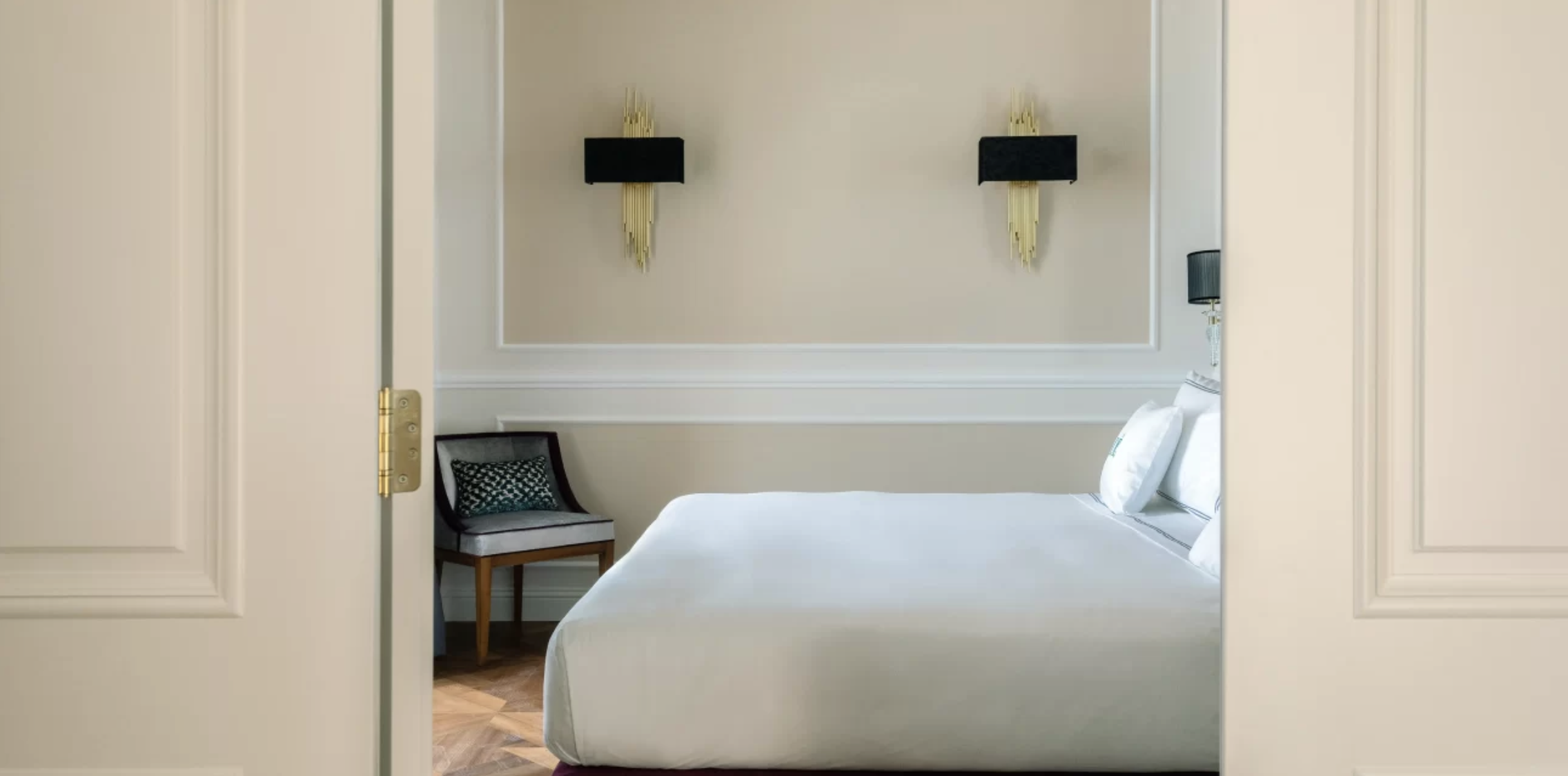
As for the rooms, they’ve been renovated with Art Deco–inflected interiors—think plenty of parquet and marble—but the main asset is their aspect: the best of them have private balconies and a palm tree-fringed view out over the Ionian Sea. Doubles from around $665; desetranger.com
You may also like.
Watch of the Week: TAG Heuer Formula 1 | Kith
The legendary sports watch returns, but with an unexpected twist.
Over the last few years, watch pundits have predicted the return of the eccentric TAG Heuer Formula 1, in some shape or form. It was all but confirmed when TAG Heuer’s heritage director, Nicholas Biebuyck, teased a slew of vintage models on his Instagram account in the aftermath of last year’s Watches & Wonders 2023 in Geneva. And when speaking with Frédéric Arnault at last year’s trade fair, the former CEO asked me directly if the brand were to relaunch its legacy Formula 1 collection, loved by collectors globally, how should they go about it?
My answer to the baited entreaty definitely didn’t mention a collaboration with Ronnie Fieg of Kith, one of the world’s biggest streetwear fashion labels. Still, here we are: the TAG Heuer Formula 1 is officially back and as colourful as ever.
As the watch industry enters its hype era—in recent years, we’ve seen MoonSwatches, Scuba Fifty Fathoms, and John Mayer G-Shocks—the new Formula 1 x Kith collaboration might be the coolest yet.

Here’s the lowdown: overnight, TAG Heuer, together with Kith, took to socials to unveil a special, limited-edition collection of Formula 1 timepieces, inspired by the original collection from the 1980s. There are 10 new watches, all limited, with some designed on a stainless steel bracelet and some on an upgraded rubber strap; both options nod to the originals.
Seven are exclusive to Kith and its global stores (New York, Los Angeles, Miami, Hawaii, Tokyo, Toronto, and Paris, to be specific), and are made in an abundance of colours. Two are exclusive to TAG Heuer; and one is “shared” between TAG Heuer and Kith—this is a highlight of the collection, in our opinion. A faithful play on the original composite quartz watch from 1986, this model, limited to just 1,350 pieces globally, features the classic black bezel with red accents, a stainless steel bracelet, and that creamy eggshell dial, in all of its vintage-inspired glory. There’s no doubt that this particular model will present as pure nostalgia for those old enough to remember when the original TAG Heuer Formula 1 made its debut.

Of course, throughout the collection, Fieg’s design cues are punctuated: the “TAG” is replaced with “Kith,” forming a contentious new brand name for this specific release, as well as Kith’s slogan, “Just Us.”
Collectors and purists alike will appreciate the dedication to the original Formula 1 collection: features like the 35mm Arnite cases—sourced from the original 80s-era supplier—the form hour hand, a triangle with a dot inside at 12 o’clock, indices that alternate every quarter between shields and dots, and a contrasting minuterie, are all welcomed design specs that make this collaboration so great.
Every TAG Heuer Formula 1 | Kith timepiece will be presented in an eye-catching box that complements the fun and colour theme of Formula 1 but drives home the premium status of this collaboration. On that note, at $2,200 a piece, this isn’t exactly an approachable quartz watch but reflects the exclusive nature of Fieg’s Kith brand and the pieces he designs (largely limited-edition).

So, what do we think? It’s important not to understate the significance of the arrival of the TAG Heuer Formula 1 in 1986, in what would prove integral in setting up the brand for success throughout the 90’s—it was the very first watch collection to have “TAG Heuer” branding, after all—but also in helping to establish a new generation of watch consumer. Like Fieg, many millennial enthusiasts will recall their sentimental ties with the Formula 1, often their first timepiece in their horological journey.
This is as faithful of a reissue as we’ll get from TAG Heuer right now, and budding watch fans should be pleased with the result. To TAG Heuer’s credit, a great deal of research has gone into perfecting and replicating this iconic collection’s proportions, materials, and aesthetic for the modern-day consumer. Sure, it would have been nice to see a full lume dial, a distinguishing feature on some of the original pieces—why this wasn’t done is lost on me—and perhaps a more approachable price point, but there’s no doubt these will become an instant hit in the days to come.
—
The TAG Heuer Formula 1 | Kith collection will be available on Friday, May 3rd, exclusively in-store at select TAG Heuer and Kith locations in Miami, and available starting Monday, May 6th, at select TAG Heuer boutiques, all Kith shops, and online at Kith.com. To see the full collection, visit tagheuer.com
You may also like.
06/05/2024
06/05/2024
30/04/2024
8 Fascinating Facts You Didn’t Know About Aston Martin
The British sports car company is most famous as the vehicle of choice for James Bond, but Aston Martin has an interesting history beyond 007.
Aston Martin will forever be associated with James Bond, ever since everyone’s favourite spy took delivery of his signature silver DB5 in the 1964 film Goldfinger. But there’s a lot more to the history of this famed British sports car brand beyond its association with the fictional British Secret Service agent.
Let’s dive into the long and colourful history of Aston Martin.
You may also like.
What Venice’s New Tourist Tax Means for Your Next Trip
The Italian city will now charge visitors an entry fee during peak season.
Visiting the Floating City just got a bit more expensive.
Venice is officially the first metropolis in the world to start implementing a day-trip fee in an effort to help the Italian hot spot combat overtourism during peak season, The Associated Press reported. The new program, which went into effect, requires travellers to cough up roughly €5 (about $AUD8.50) per person before they can explore the city’s canals and historic sites. Back in January, Venice also announced that starting in June, it would cap the size of tourist groups to 25 people and prohibit loudspeakers in the city centre and the islands of Murano, Burano, and Torcello.
“We need to find a new balance between the tourists and residents,’ Simone Venturini, the city’s top tourism official, told AP News. “We need to safeguard the spaces of the residents, of course, and we need to discourage the arrival of day-trippers on some particular days.”
During this trial phase, the fee only applies to the 29 days deemed the busiest—between April 25 and July 14—and tickets will remain valid from 8:30 am to 4 pm. Visitors under 14 years of age will be allowed in free of charge in addition to guests with hotel reservations. However, the latter must apply online beforehand to request an exemption. Day-trippers can also pre-pay for tickets online via the city’s official tourism site or snap them up in person at the Santa Lucia train station.
“With courage and great humility, we are introducing this system because we want to give a future to Venice and leave this heritage of humanity to future generations,” Venice Mayor Luigi Brugnaro said in a statement on X (formerly known as Twitter) regarding the city’s much-talked-about entry fee.
Despite the mayor’s backing, it’s apparent that residents weren’t totally pleased with the program. The regulation led to protests and riots outside of the train station, The Independent reported. “We are against this measure because it will do nothing to stop overtourism,” resident Cristina Romieri told the outlet. “Moreover, it is such a complex regulation with so many exceptions that it will also be difficult to enforce it.”
While Venice is the first city to carry out the new day-tripper fee, several other European locales have introduced or raised tourist taxes to fend off large crowds and boost the local economy. Most recently, Barcelona increased its city-wide tourist tax. Similarly, you’ll have to pay an extra “climate crisis resilience” tax if you plan on visiting Greece that will fund the country’s disaster recovery projects.
You may also like.
06/05/2024
30/04/2024
06/05/2024






